Abstract
19 The effect of pent-4-enoic acid, propionic acid and several other short-chain fatty acids on citrulline synthesis in rat liver mitochondria was studied. 2.Pent-4-enoate at 1 mM inhibited mitochondrial citulline synthesis by about 80-90%. It is concluded that pent-4-enoate inhibits citrulline synthesis by interfering with some aspect of mitochondrial energy metabolism. This results in impairment of mitochondrial ornithine uptake or depletion of mitochondrial ATP, which, in turn, impairs carbamoyl phosphate synthesis or both. Evidence in support of this conclusion includes: pent-4-enoate has no effect on citrulline synthesis supported by succinate or exogenous ATP; pent-4-enoate lowers the medium plus mitochondrial ATP concentration; finally, when glutamate is the oxidizable substrate, pent-4-enoate decreases the carbamoyl phosphate concentration in mitochondria incubated without ornithine to minimize citrulline synthesis and impairs the mitochondrial uptake of ornithine, but it has neither effect when succinate is the oxidizable substrate. 4. Propionate, butyrate and crotonate also inhibit mitochondrial citrulline synthesis, but much less than pent-4-enoate. 5. Acetate, pentanoate, pent-2-enoate, hexanoate, octanoate, isovalerate, tiglylate and alpha-methylbutyrate have little or no effect on mitochondrial citrulline synthesis.
Full text
PDF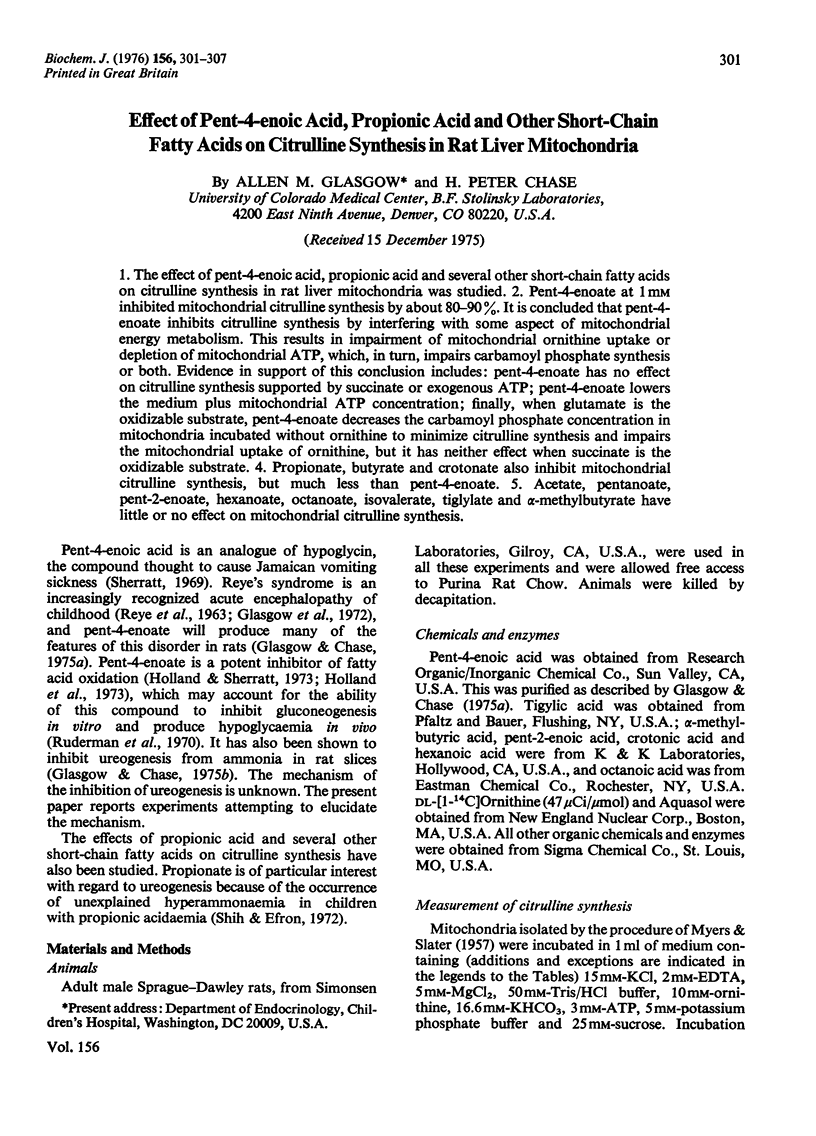
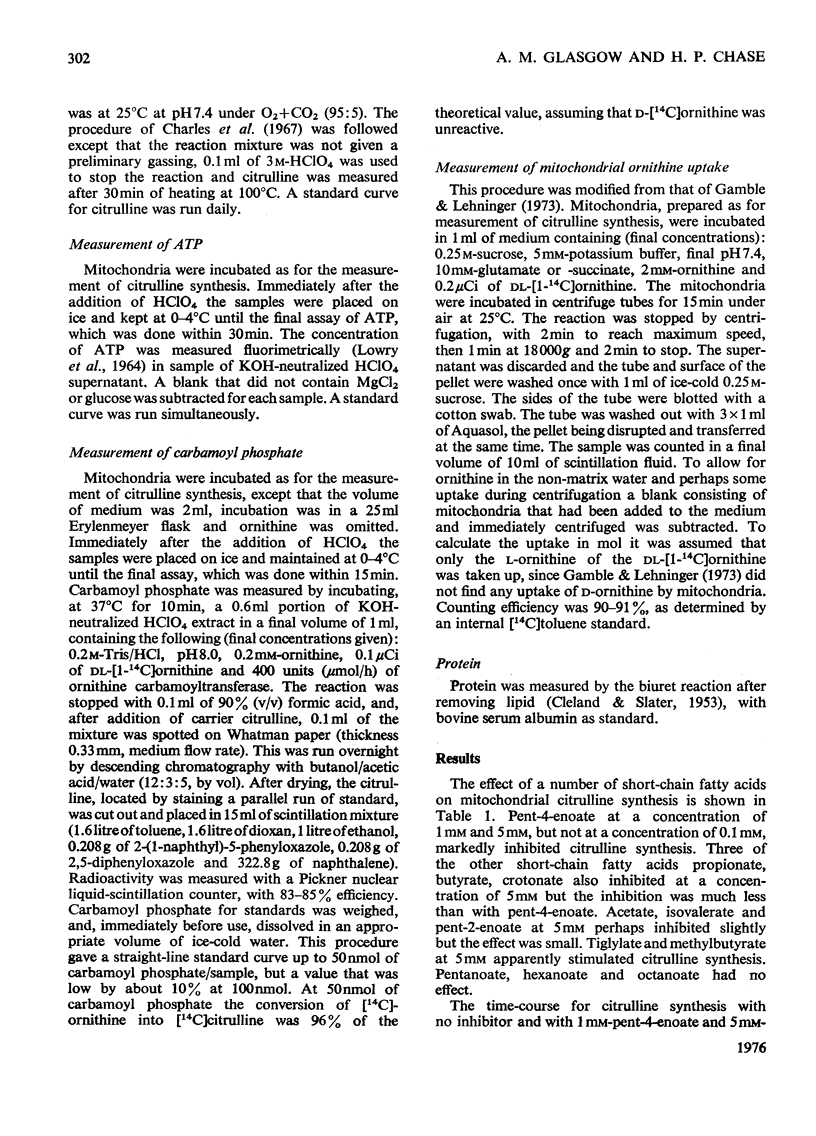
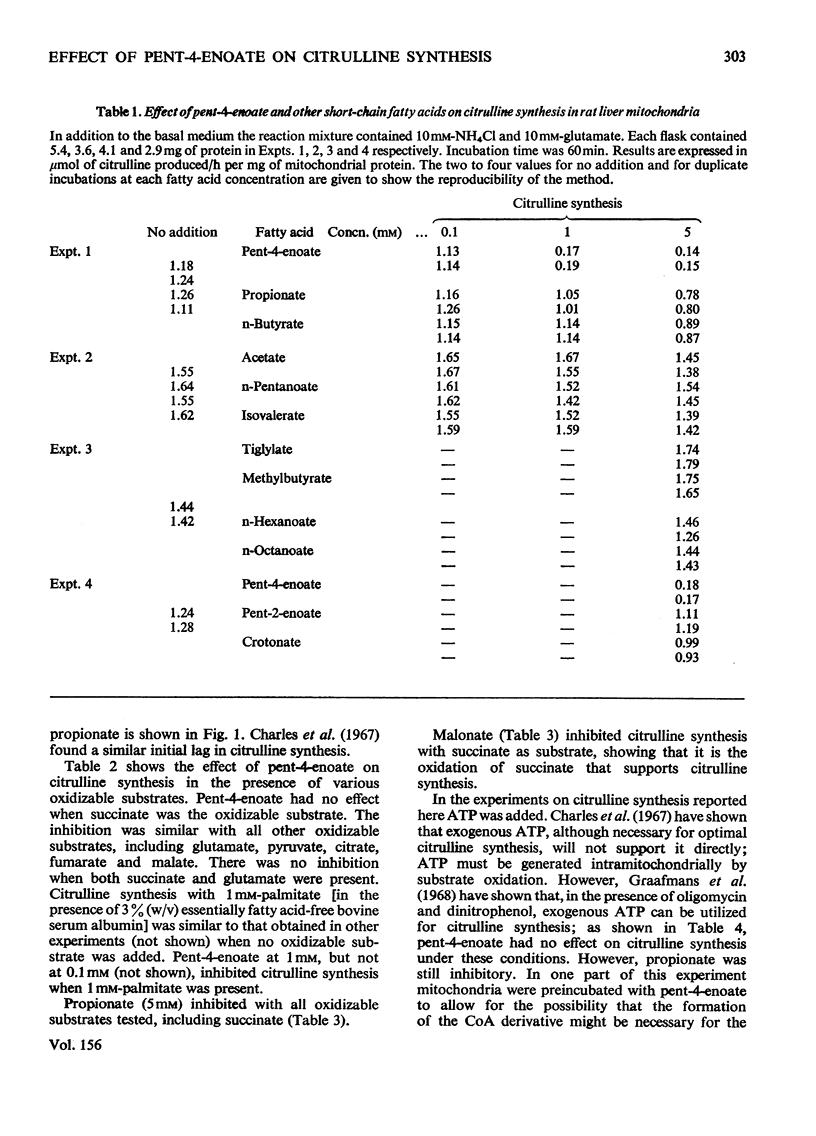
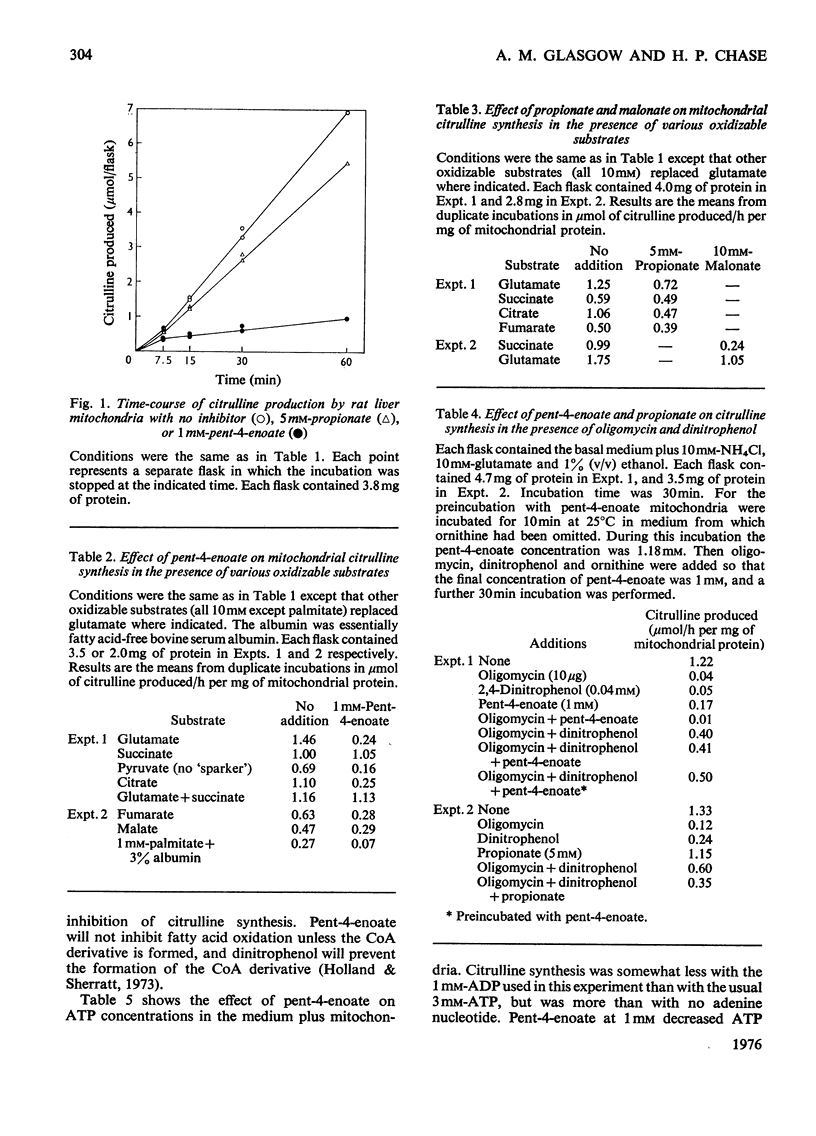
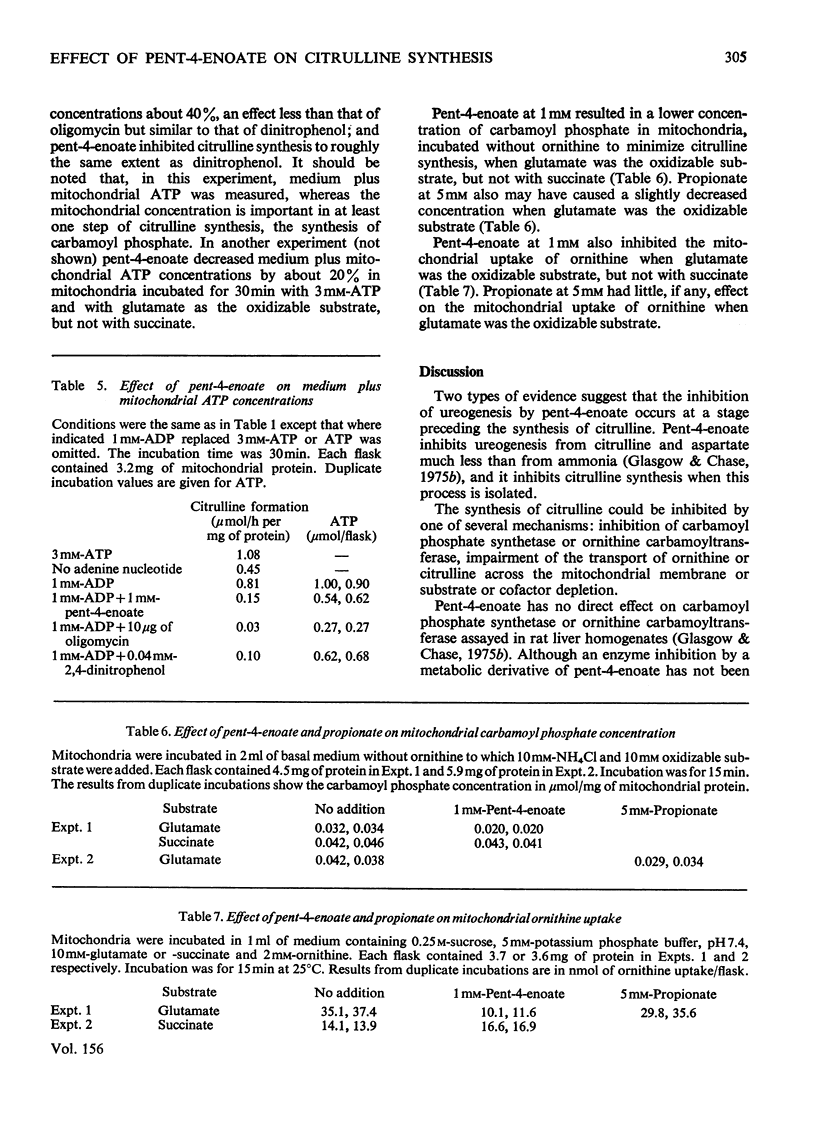
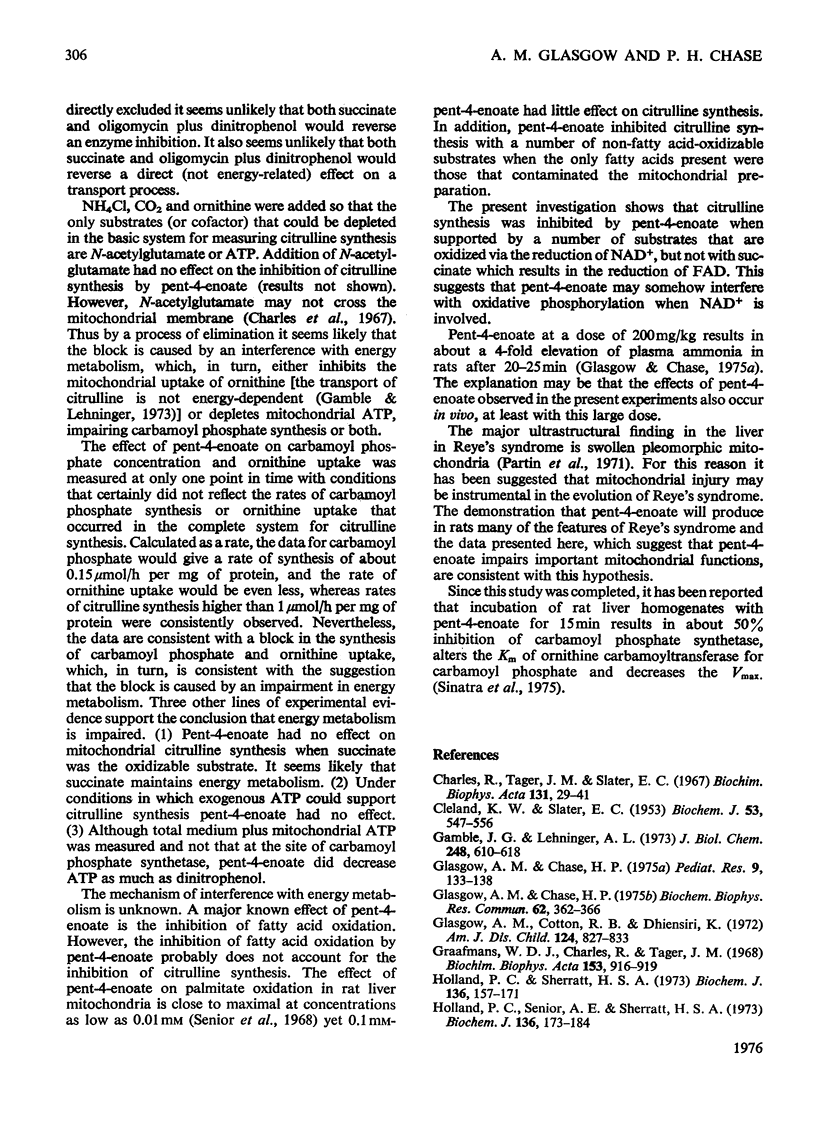
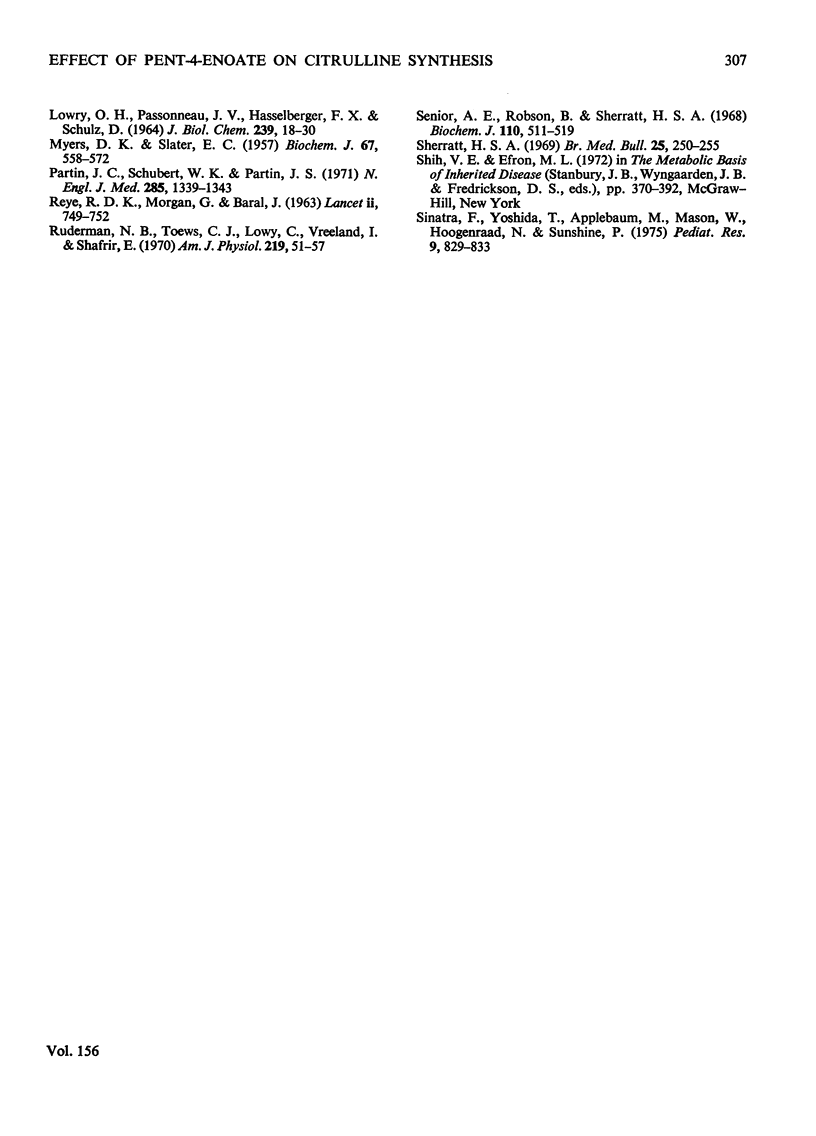
Selected References
These references are in PubMed. This may not be the complete list of references from this article.
- CLELAND K. W., SLATER E. C. Respiratory granules of heart muscle. Biochem J. 1953 Mar;53(4):547–556. doi: 10.1042/bj0530547. [DOI] [PMC free article] [PubMed] [Google Scholar]
- Gamble J. G., Lehninger A. L. Transport of ornithine and citrulline across the mitochondrial membrane. J Biol Chem. 1973 Jan 25;248(2):610–618. [PubMed] [Google Scholar]
- Glasgow A. M., Chase H. P. Inhibition of urea synthesis by 4-pentenoic acid. Biochem Biophys Res Commun. 1975 Jan 20;62(2):362–366. doi: 10.1016/s0006-291x(75)80147-1. [DOI] [PubMed] [Google Scholar]
- Glasgow A. M., Chase H. P. Production of the features of Reye's syndrome in rats with 4-pentenoic acid. Pediatr Res. 1975 Mar;9(3):133–138. doi: 10.1203/00006450-197503000-00005. [DOI] [PubMed] [Google Scholar]
- Glasgow A. M., Cotton R. B., Dhiensiri K. Reye's syndrome. I. Blood ammonia and consideration of the nonhistologic diagnosis. Am J Dis Child. 1972 Dec;124(6):827–833. doi: 10.1001/archpedi.1972.02110180029003. [DOI] [PubMed] [Google Scholar]
- Graafmans W. D., Charles R., Tager J. M. Mitochondrial citrulline synthesis with exogenous ATP. Biochim Biophys Acta. 1968 May 28;153(4):916–919. doi: 10.1016/0005-2728(68)90025-x. [DOI] [PubMed] [Google Scholar]
- Holland P. C., Senior A. E., Sherratt H. S. Biochemical effects of the hypoglycaemic compound pent-4-enoic acid and related non-hypoglycaemic fatty acids. Effects of their coenzyme A esters on enzymes of fatty acid oxidation. Biochem J. 1973 Sep;136(1):173–184. doi: 10.1042/bj1360173. [DOI] [PMC free article] [PubMed] [Google Scholar]
- Holland P. C., Sherratt H. S. Biochemical effects of the hypoglycaemic compound pent-4-enoic acid and related non-hypoglycaemic fatty acids. Effects of the free acids and their carnitine esters on coenzyme A-dependent oxidations in rat liver mitochondria. Biochem J. 1973 Sep;136(1):157–171. doi: 10.1042/bj1360157. [DOI] [PMC free article] [PubMed] [Google Scholar]
- LOWRY O. H., PASSONNEAU J. V., HASSELBERGER F. X., SCHULZ D. W. EFFECT OF ISCHEMIA ON KNOWN SUBSTRATES AND COFACTORS OF THE GLYCOLYTIC PATHWAY IN BRAIN. J Biol Chem. 1964 Jan;239:18–30. [PubMed] [Google Scholar]
- MYERS D. K., SLATER E. C. The enzymic hydrolysis of adenosine triphosphate by liver mitochondria. I. Activities at different pH values. Biochem J. 1957 Dec;67(4):558–572. doi: 10.1042/bj0670558. [DOI] [PMC free article] [PubMed] [Google Scholar]
- Partin J. C., Schubert W. K., Partin J. S. Mitochondrial ultrastructure in Reye's syndrome (encephalopathy and fatty degeneration of the viscera). N Engl J Med. 1971 Dec 9;285(24):1339–1343. doi: 10.1056/NEJM197112092852402. [DOI] [PubMed] [Google Scholar]
- REYE R. D., MORGAN G., BARAL J. ENCEPHALOPATHY AND FATTY DEGENERATION OF THE VISCERA. A DISEASE ENTITY IN CHILDHOOD. Lancet. 1963 Oct 12;2(7311):749–752. doi: 10.1016/s0140-6736(63)90554-3. [DOI] [PubMed] [Google Scholar]
- Ruderman N. B., Toews C. J., Lowy C., Vreeland I., Shafrir E. Inhibition of hepatic gluconeogenesis and fatty acid oxidation by pent-4-enoic acid. Am J Physiol. 1970 Jul;219(1):51–57. doi: 10.1152/ajplegacy.1970.219.1.51. [DOI] [PubMed] [Google Scholar]
- Senior A. E., Robson B., Sherratt H. S. Biochemical effects of the hypoglycaemic compound pent--4-enoic acid and related non-hypoglycaemic fatty acids. Biochem J. 1968 Dec;110(3):511–519. doi: 10.1042/bj1100511. [DOI] [PMC free article] [PubMed] [Google Scholar]
- Sherratt H. S. Hypoglycin and related hypoglycaemic compounds. Br Med Bull. 1969 Sep;25(3):250–255. doi: 10.1093/oxfordjournals.bmb.a070713. [DOI] [PubMed] [Google Scholar]
- Sinatra F., Yoshida T., Applebaum M., Masion Hoogenraad N. J., Sunshine P. Abnormalities of carbamyl phosphate synthetase and ornithine transcarbamylase in liver of patients with Reye's syndrome. Pediatr Res. 1975 Nov;9(11):829–833. doi: 10.1203/00006450-197511000-00005. [DOI] [PubMed] [Google Scholar]


